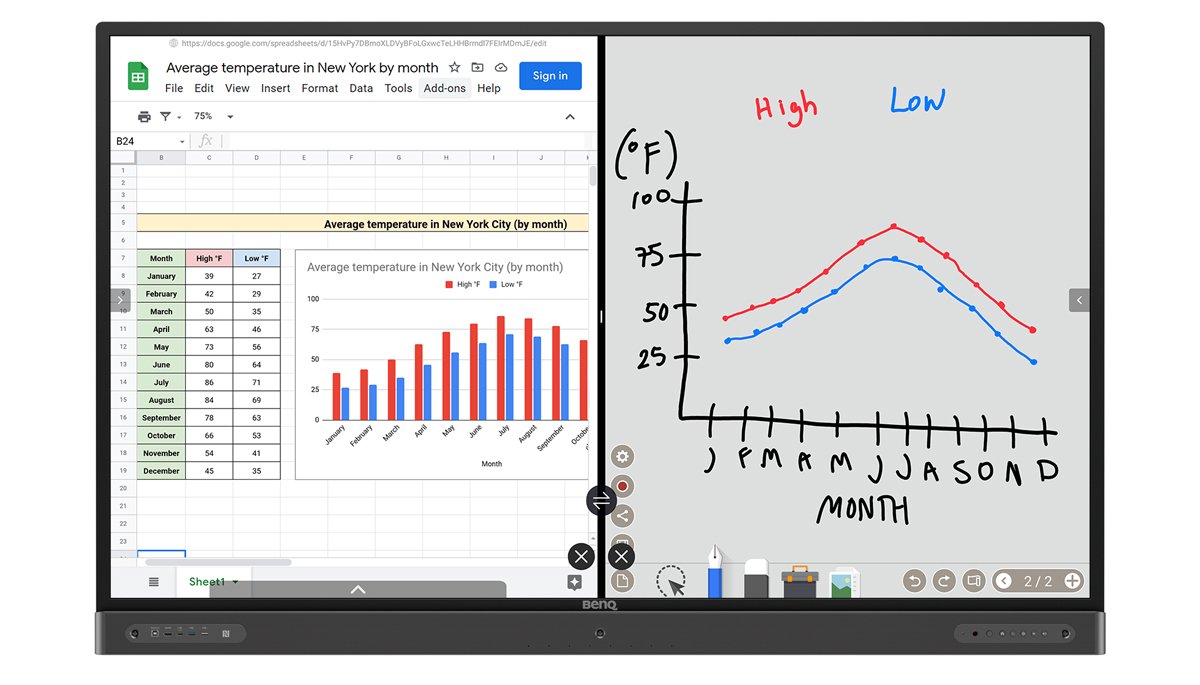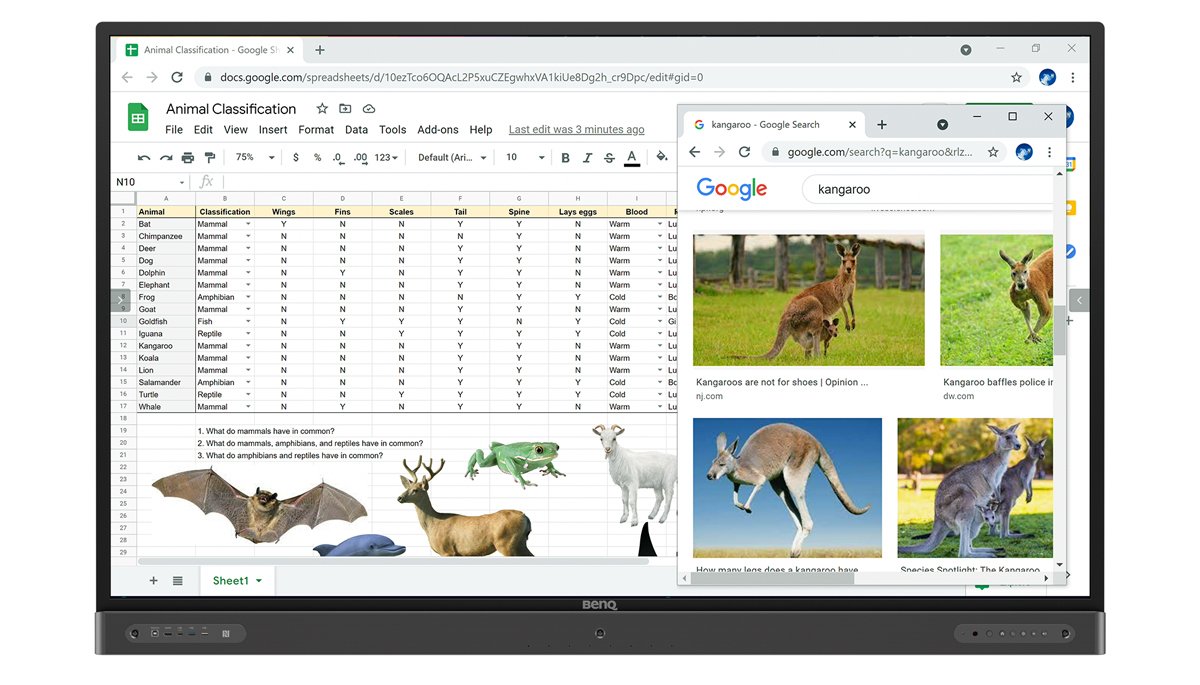K-12 Activities with Google Sheets on BenQ Education Displays
- BenQ
- 2021-11-17
Google Sheets is a powerful tool that can be used for fun and engaging activities in any subject. Below are a few ideas you can try with your class.
Spreadsheet games
Spreadsheets are a crucial part of every student’s curriculum, but they can be a boring topic if not introduced in an entertaining manner. Playing games on Google Sheets is an effective hands-on way to introduce younger students to spreadsheets and get them used to all the basic functions.

An easy game to play with students in class is battleship. To start, have all students open up Google Sheets on their personal devices and pull up a spreadsheet on the BenQ interactive display as well. Walk students through naming the spreadsheet, setting cell sizes, changing borders, and coloring in cells. From there, have students make and name their ships, then show them how to select ship cells to move them around the spreadsheet. When everyone is ready to play and the students have placed their ships in the water, you can call out cell references, which the students then fill with color in their spreadsheets.
Graph practice
Graphs play an important role in helping students visualize data, a task made easier by the automatic chart generation function of Google Sheets. Using a BenQ interactive display is a great way to familiarize students with graphs in the classroom.

With the Duo Windows split-screen mode on BenQ interactive displays, you can open Google Sheets on one side and EZWrite on the other. Preparing the data beforehand on a Google Sheets document saves class time for plotting. You can also insert line or column charts into the document in advance to give students a guideline. On EZWrite, walk students through the different concepts of graphs then have them take turns coming up to the display to plot data and add labels.
Data collection
Students take in an overwhelming amount of information on a daily basis. Google Sheets can help them better process all this data by enabling the creation of databases for any subject, equipping them with a skill that will prove useful throughout their academic career and beyond.

Data collection can first be practiced using a shared class spreadsheet. By connecting your notebook to a BenQ education display, you can walk your students through the process of setting up a table to teach them how to make their own database. Students should then begin collecting data individually or in groups while simultaneously populating the table. You can also teach them to add dropdown lists, filter data, and sort lists alphabetically.
If you have enabled two-way touch between your notebook and the BenQ interactive display, a web browser can be opened to find information or visual aids. Students can then input information into the table or search for data directly on the interactive display.
For more classroom tips and tricks, check out the Teacher’s Toolkit.